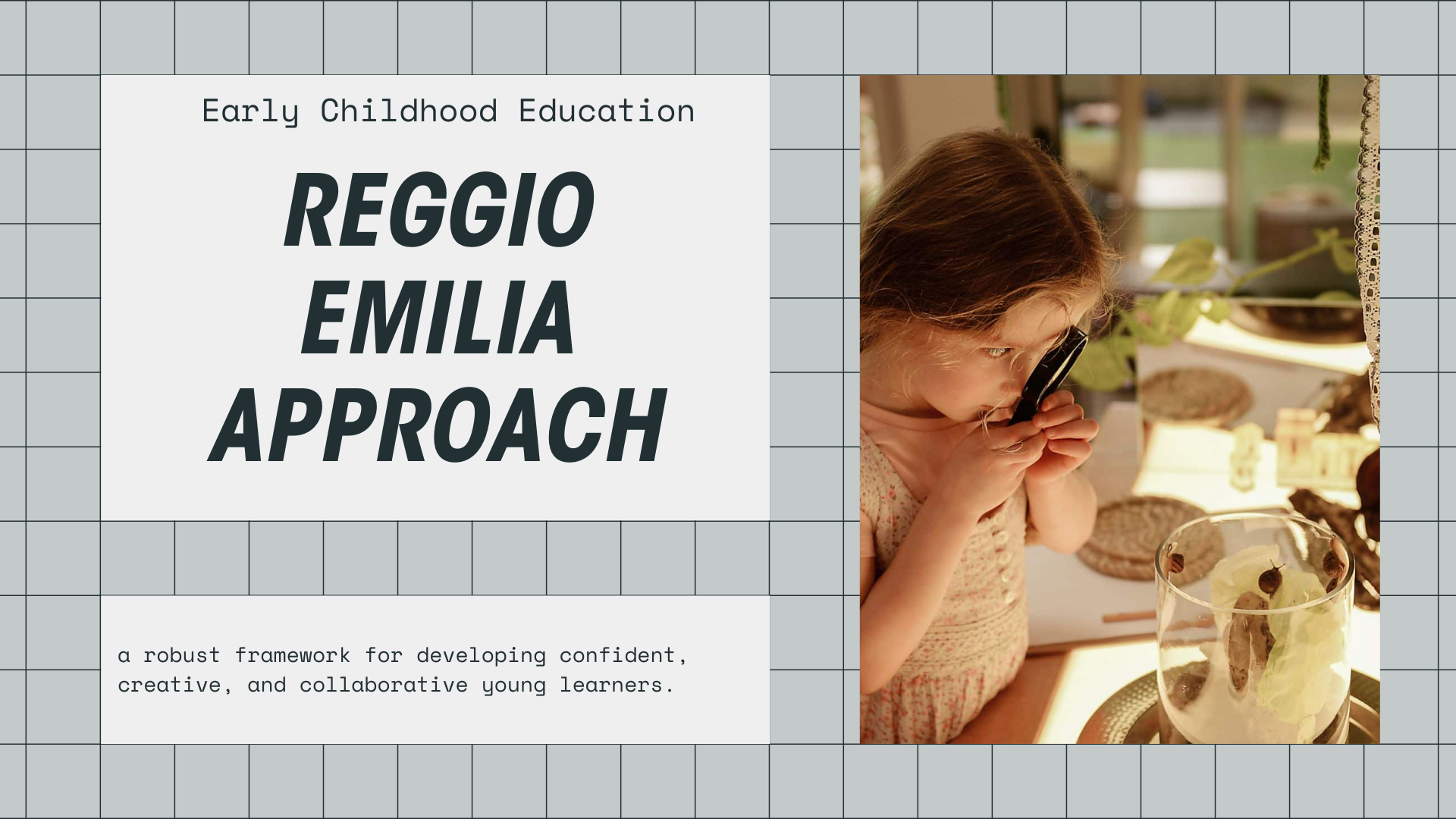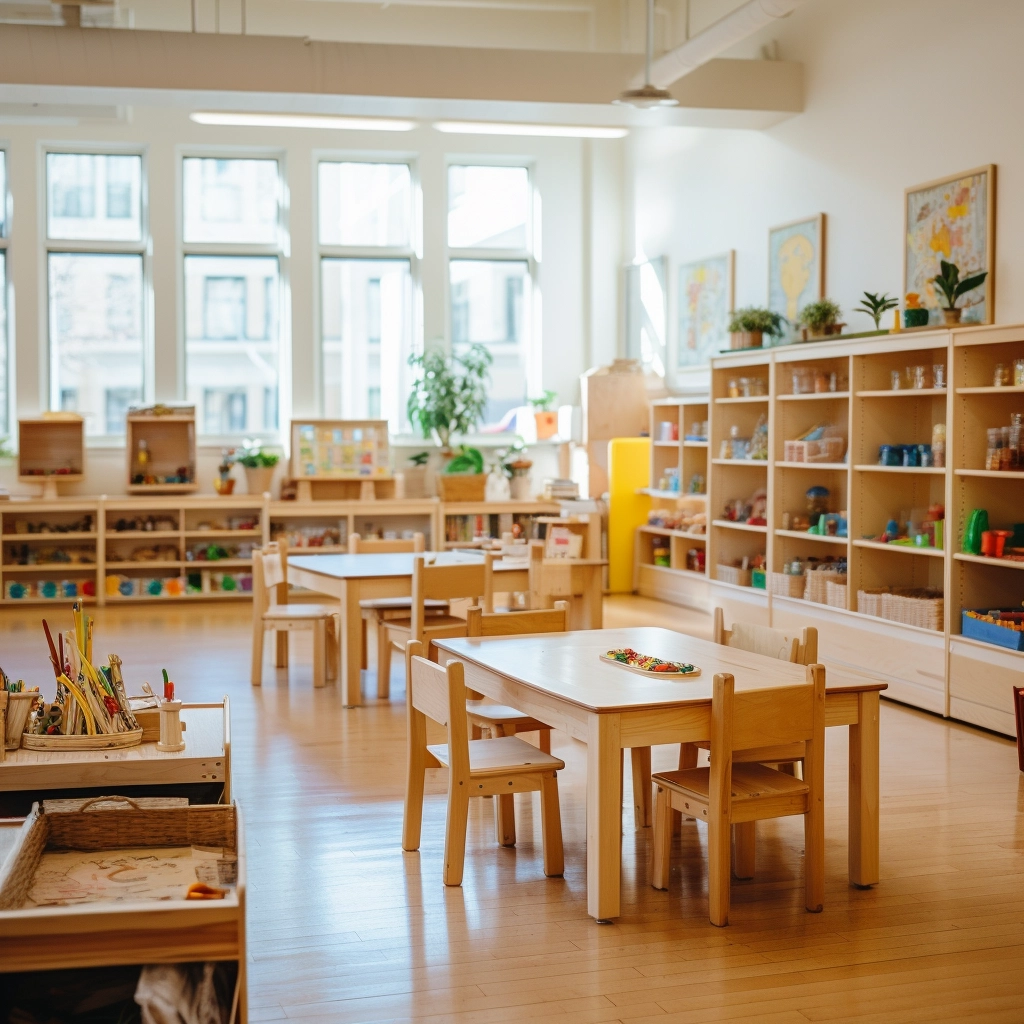아이들을 수동적인 지식 수용자로 대하는 유아 교육 모델에 좌절감을 느끼시나요? 전통적인 교실이 너무 구조화되고, 획일적이며, 진정한 호기심을 불러일으키지 않는다고 생각하시나요? 왜 어떤 유치원은 혁신적이고 자신감 있는 사고를 가진 아이들을 키우는 반면, 다른 유치원은 순응과 적응만 강요하는 아이들만 키우는 걸까요?
The Reggio Emilia Approach is more than an educational philosophy; it is a robust framework for developing confident, creative, and collaborative young learners. Rooted in respect for the child as an active constructor of knowledge, the Reggio Emilia Approach empowers early learners to explore, express, and engage deeply with their environment. It transforms classrooms into living laboratories of discovery, where children’s ideas lead the way and teachers act as partners in their growth.
If you’re designing a preschool that inspires imagination, nurtures critical thinking, and values each child’s voice, the Reggio Emilia Approach isn’t optional. It’s essential.
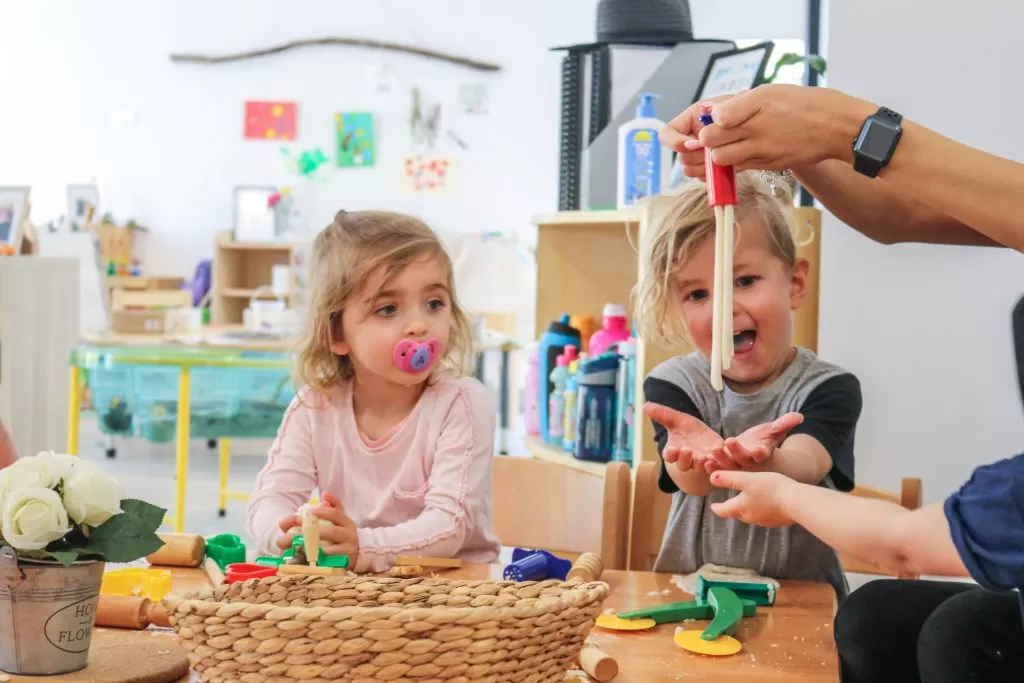
레지오 에밀리아 접근법이란 무엇인가?
The Reggio Emilia approach offers a distinctive perspective on early childhood education, rooted in respect for the child as an active participant in their own development. It invites educators and families to rethink traditional roles and see learning as a dynamic, collaborative journey.
레지오 에밀리아 접근 철학
The Reggio Emilia approach is a child-centered educational philosophy that views children as strong, capable, and full of potential. Originating in Reggio Emilia, Italy, after World War II, it is grounded in the belief that children construct their knowledge through meaningful interactions with their environment, peers, and adults. This approach emphasizes hands-on, project-based learning, where children are encouraged to explore their interests through multiple forms of expression—such as art, music, movement, and dramatic play. Teachers act as facilitators and keen observers, documenting the learning process and collaborating with children to deepen understanding.
레지오 에밀리아 접근법의 역사와 기원
The Reggio Emilia Approach originated in Reggio Emilia, Italy, after World War II. The community, devastated by the war, sought to rebuild a more just and democratic society, starting with early childhood education.
이 교육 운동의 중심에는 로리스 말라구치, 그 레지오 에밀리아 접근법의 창시자심리학자이자 교육자인 말라구치는 아이들이 수동적인 교육의 수신자가 아닌, 지식을 구성하는 적극적인 참여자로 여겨지는 학교를 구상했습니다.
수십 년에 걸쳐 이러한 접근 방식은 전 세계적으로 인정받는 교육 모델로 발전했습니다. 창의성, 비판적 사고, 그리고 의미 있는 관계를 강조하는 이 접근 방식은 유럽, 북미를 비롯한 전 세계의 유치원에 영향을 미쳤습니다.
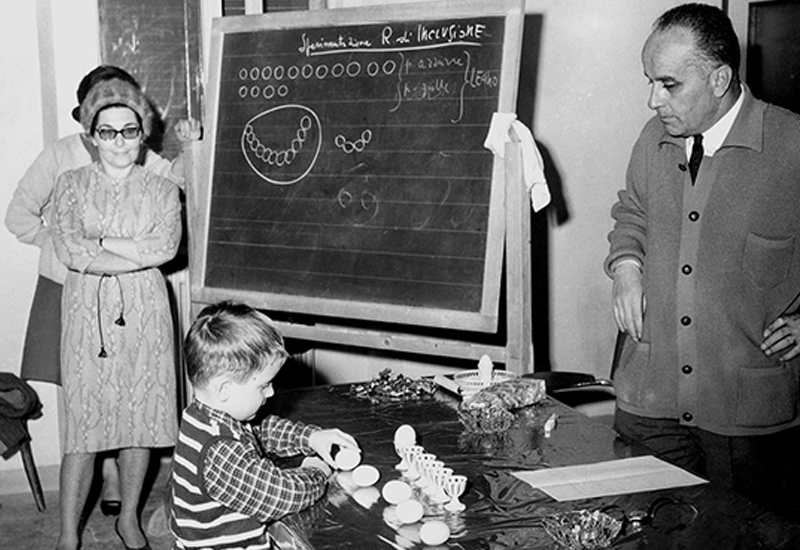
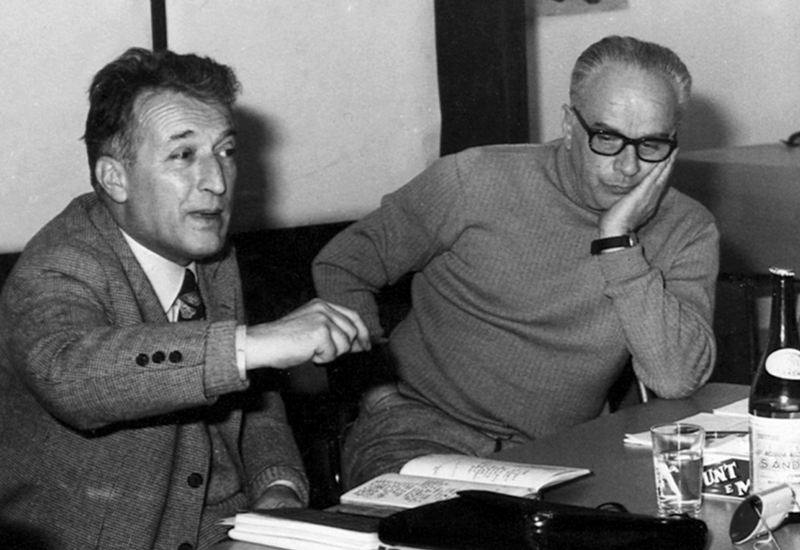
레지오 에밀리아 접근 방식과 몬테소리
The Reggio Emilia Approach and the Montessori Method are child-centered but differ in educational structure and philosophy. Reggio is inquiry-driven and collaborative; Montessori is structured and focused on independent mastery of materials.
| 측면 | 레지오 에밀리아 접근법 | 몬테소리 방법 |
|---|---|---|
| 학습 스타일 | 프로젝트 기반, 신생 | 순차적, 기술 기반 |
| 교사의 역할 | 공동 학습자이자 협력자 | 가이드 및 관찰자 |
| 환경 | 미적, 유연성, 아동 중심 | 질서 있고, 재료 중심적 |
| 표현 | 다양한 창의적인 "언어" | 정의된 감각적 소재 |
| 평가 | 문서화 및 대화 | 관찰을 통한 숙달 |
Both approaches respect the child as an active learner. The right choice often depends on the educational focus on creative collaboration or structured independence.
Key Principles of the Reggio Emilia Approach
The Reggio Emilia Approach is built on a foundation of guiding principles that shape every aspect of the learning environment. These principles go beyond teaching techniques; they reflect a deep respect for children’s rights, capabilities, and ways of knowing.
명확성과 영향력을 위해 피라미드식 글쓰기 스타일을 따르며, 가장 필수적인 아이디어부터 뒷받침하는 아이디어까지 구성된 핵심 원칙에 대한 간략한 분석은 다음과 같습니다.
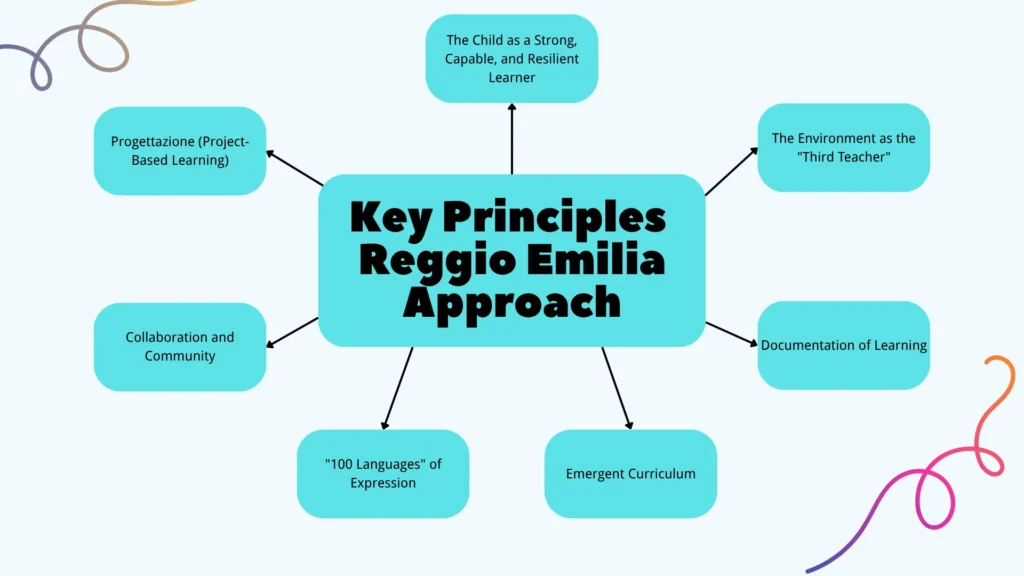
1. The Child as a Strong, Capable, and Resilient Learner
Children are viewed as competent individuals with the ability to construct their knowledge. They are not passive recipients of instruction, but active explorers with personal agency. Educators respect children’s ideas, encourage inquiry, and support learning through dialogue, reflection, and experimentation.
2. The Environment as the “Third Teacher”
The physical environment intentionally promotes exploration, autonomy, and interaction. Natural light, open-ended materials, and aesthetically considered spaces support focus, creativity, and collaboration. The classroom teaches, offering cues, challenges, and learning opportunities.
3. Documentation of Learning
Educators systematically observe and document children’s learning processes using photographs, transcriptions, and video recordings. This documentation is a tool for reflection, planning, and family communication. It makes children’s thinking visible and provides continuity and depth in curriculum development.
4. Emergent Curriculum
Curriculum arises from children’s interests and inquiries rather than from predetermined topics. Teachers observe children closely, identify themes in their play or questions, and then co-construct learning experiences that expand and deepen those interests. This approach maintains developmental relevance and student engagement.
5. The “Hundred Languages” of Expression
The approach recognizes that children express their understanding in multiple symbolic forms — visual arts, movement, music, storytelling, construction, and more. These forms are not secondary to verbal language; they are essential tools through which children represent, test, and refine ideas.
6. Collaboration and Community
Learning is considered a relational process. Children learn in interaction with peers, teachers, families, and the broader community. Cooperation, dialogue, and shared problem-solving are emphasized. Families are active participants in school life, and their involvement is integral to the educational experience.

7. Progettazione (Project-Based Learning)
Children engage in extended investigations, often collaboratively, centered on topics that emerge from their expressed interests. These projects support sustained inquiry and integrate multiple domains of learning. Teachers guide the process by introducing materials, posing questions, and helping children reflect on their work.
학습에 영감을 주는 공간을 디자인할 준비가 되셨나요? 교실의 필요에 맞춘 맞춤형 가구 솔루션을 위해 저희에게 문의하세요.
레지오 에밀리아 접근법의 이점
The Reggio Emilia Approach is a practical, proven framework that delivers deep and lasting benefits for children, educators, and families. Its child-centered, inquiry-driven nature unlocks real developmental advantages that traditional models overlook.
1. 창의성과 비판적 사고를 촉진합니다.
One of the Reggio Emilia Approach’s greatest strengths is its ability to cultivate creative, independent thinkers. Instead of memorizing facts or completing predefined tasks, children are invited to explore real-world questions that emerge from their curiosity.
By encouraging experimentation, self-expression, and open-ended inquiry, the approach helps children develop a flexible, problem-solving mindset. They learn to test ideas, make decisions, and reflect. Creativity here is not a separate subject. It’s embedded in every interaction, every project, and every material children engage with.
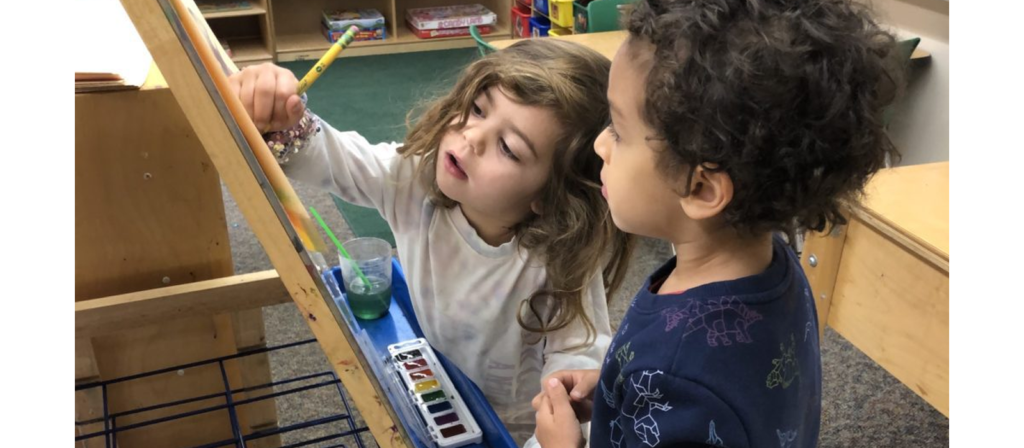
2. 사회적 기술과 의사소통 기술을 강화합니다.
Children in Reggio-inspired classrooms constantly engage in conversation, group work, and collaborative decision-making. These interactions sharpen communication, listening, and negotiation skills from a very early age.
This collaborative environment encourages empathy and respect. Children learn to consider other perspectives, articulate their thoughts clearly, and find shared solutions within a socially supportive setting. Such skills are essential for academic success and navigating relationships in both school and life.
3. 감성 지능과 자기 조절을 장려합니다.
The Reggio Emilia Approach integrates emotional growth into the learning process. Under the guidance of observant educators, children are encouraged to express feelings, navigate challenges, and reflect on their emotional experiences.
Rather than disciplining behavior reactively, teachers help children understand their emotions, make thoughtful choices, and resolve conflicts with respect and autonomy. This builds stronger self-awareness and emotional resilience. As a result, children become more secure in themselves and better equipped to manage frustration, adapt to change, and build positive relationships.
4. 참여와 동기를 강화합니다.
Because learning is based on what children care about, their focus and enthusiasm naturally increase. They are not simply following instructions; they are actively driving their learning journey. This sense of ownership fuels intrinsic motivation.
Children in Reggio-inspired environments show more persistence, initiative, and joy in their work. They dig deeper into topics, stay engaged longer, and take pride in their creations and discoveries. The Reggio Emilia Approach often leads to deeper understanding and better retention than traditional instruction.
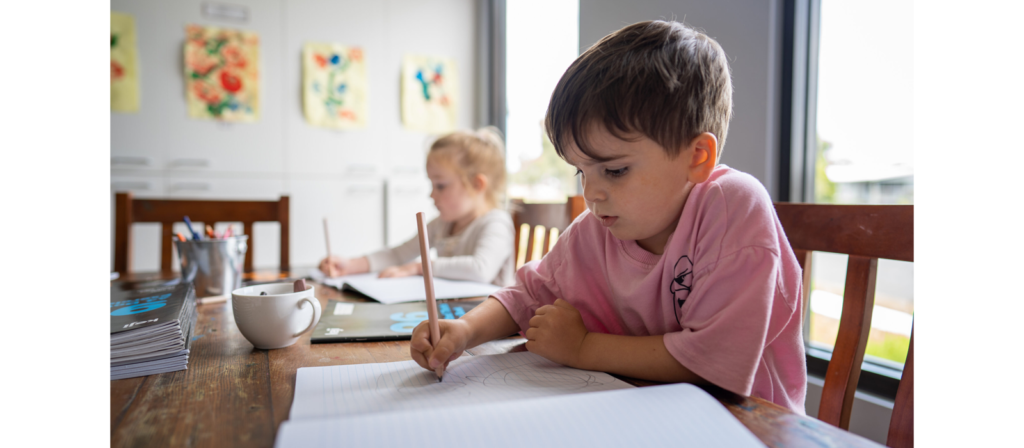
5. 부모와의 강력한 파트너십을 구축합니다.
It values and integrates parents into the educational process. Families are not just informed but invited to participate, observe, and contribute. Through transparent communication, documentation of learning, and regular involvement, parents gain a clearer view of their child’s development.
This strengthens trust and builds a learning community around the child that extends from school to home. Children feel more supported and connected when families feel seen and included, and their growth accelerates meaningfully.
레지오 에밀리아 접근법의 교실 환경
Referred to as the “third teacher”, the physical environment plays a central role in shaping how children explore, interact, and make meaning. Every element in the space is intentionally chosen to support inquiry, collaboration, and aesthetic appreciation.
1. 아이를 반영하는 공간
Reggio-inspired classrooms are designed to feel like homes, studios, and laboratories combined. They are warm and welcoming and filled with natural light, plants, open shelving, and real-world materials. This design signals to children that they are respected and that their surroundings are worthy of care and attention.
Children can access a wide range of open-ended materials — such as fabric, clay, wood, wire, stones, and mirrors — inviting creativity and experimentation. Unlike traditional classrooms focusing on plastic toys or rote tools, these environments support flexible thinking and imaginative play.
교실은 의미 있는 방식으로 변화합니다. 아이들이 새로운 관심사를 탐구함에 따라, 수업 자료와 배치는 아이들의 질문과 발견을 반영하도록 조정됩니다. 이렇게 하여 교실 환경은 아이들의 학습 여정을 생생하게 표현하는 공간이 됩니다.
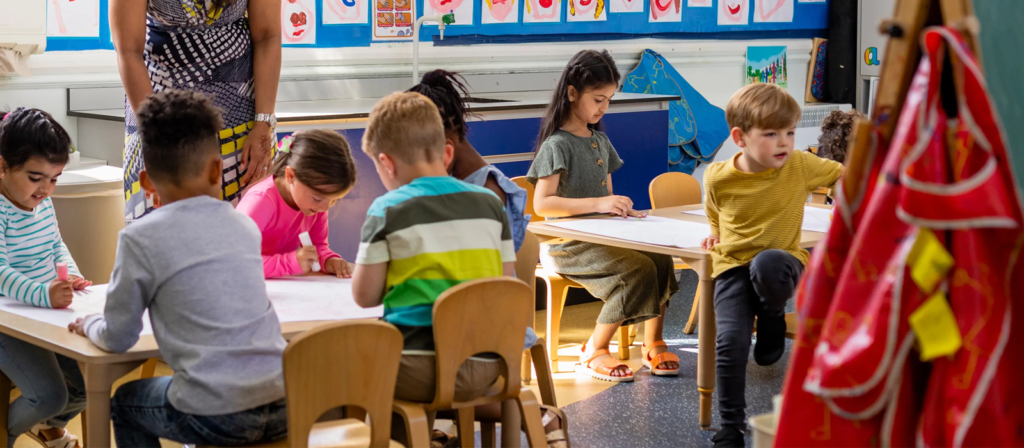
2. 투명성, 접근성, 아름다움
A hallmark of the Reggio Emilia classroom is literal and figurative transparency. Glass walls, interior windows, and display panels are common, allowing visibility between spaces and making learning visible to others. Children can observe peers in other rooms, teachers can monitor interactions, and families can witness the learning process unfolding.
Materials and tools are placed at child height, fostering independence and autonomy. Open shelves allow children to choose resources freely. Display areas showcase not only finished work but also learning in progress, including drawings, drafts, conversations, and questions. This reinforces the idea that the process is just as important as the product.
The aesthetics of the space matter deeply. A beautiful environment communicates value. It inspires children to take pride in their work and to engage more thoughtfully with their surroundings. This principle, that beauty invites learning, is one of the most distinct characteristics of the Reggio Emilia Approach.
3. Flexible Spaces That Support Movement and Possibility
A Reggio Emilia classroom is intentionally designed to support movement, flexibility, and multiple layers of use. Rather than assigning rigid functions to fixed areas, the space invites transformation throughout the day. A reading corner may become a theater stage, a science table may turn into a construction zone, and a quiet area may evolve into a site for collaborative storytelling. This adaptability empowers children to reimagine how they use the environment based on their interests and intentions.
The Reggio-inspired layout promotes open circulation. Pathways are clear, wide, and unobstructed, allowing children to move freely between individual work, small group projects, and whole-class gatherings. Materials are organized in ways that encourage spontaneous use, and furniture is light and rearrangeable to support shifting group sizes and learning modes. Instead of confining children to specific stations, the environment offers a continuous flow that mirrors the way children naturally explore.
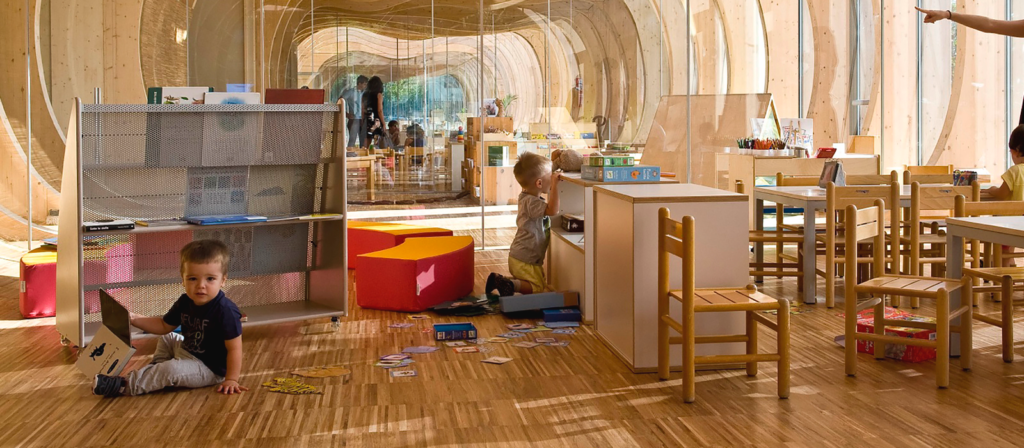
This fluid and layered design nurtures autonomy, decision-making, and self-regulation. Children learn to navigate space with purpose, make choices about where and how to work, and adapt their thinking as contexts change. The result is a dynamic classroom where the environment itself becomes a partner in discovery, supporting learning that is physical, intellectual, and creative all at once.
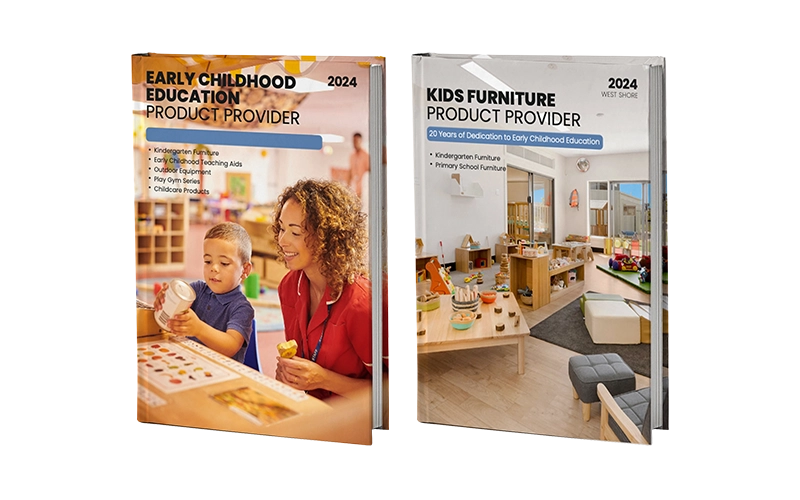
레지오에서 영감을 받은 교실을 위한 공간 정의 및 장비 구축 방법
Designing a Reggio-inspired classroom begins with the belief that the environment plays an active role in a child’s learning journey. Every space should reflect intention, purpose, and flexibility, allowing for both individual exploration and group collaboration. Rather than filling a room with furniture and materials, educators define each area with care, guided by how children move, interact, and express themselves.
1. Begin with the Child’s Perspective
Start by observing how children move, play, and interact. Consider their eye level, their reach, and the way they engage with their surroundings. All furniture, shelving, and materials should be placed to support independence. The room should feel welcoming, not overwhelming. By designing from the child’s point of view, the environment immediately becomes more accessible, comfortable, and empowering.
2. Define Learning Zones with Intention and Flexibility
Divide the room into zones that support different types of learning experiences. These might include an atelier for artistic expression, a construction area for building, a reading nook for quiet time, and a science table for exploration. Use soft spatial markers such as rugs, shelving, or lighting changes to separate zones without blocking flow. Keep in mind that zones should not be static. They can evolve, blend, and shift over time.
3. Choose Flexible, Natural Furniture That Supports Autonomy
적절한 가구는 단순히 공간을 채우는 것 이상의 역할을 합니다. 아이들이 그 공간과 어떻게 상호작용하는지를 결정합니다. 웨스트 쇼어 가구, 우리는 생산합니다 유치원 및 미취학 아동 가구 specifically tailored to Reggio-inspired environments. Our designs prioritize modularity, accessibility, and natural aesthetics, using wood textures, smooth finishes, and rounded forms that invite exploration. Open-shelf units, mobile storage, adjustable tables, and seating scaled to the child’s body enable children to independently access materials, transition between zones, and manage their learning process. In the Reggio Emilia philosophy, furniture is not passive — it’s a pedagogical tool that quietly encourages agency and curiosity.
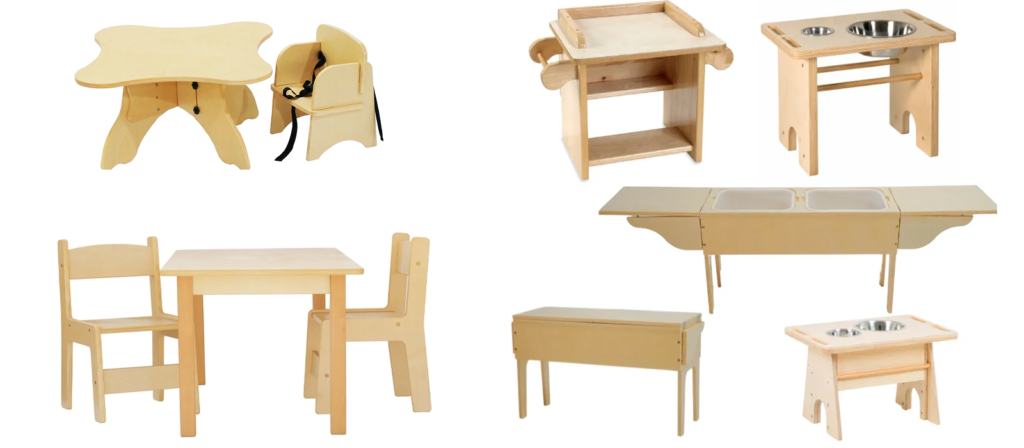
4. Creating Soft Boundaries for Flow
In Reggio Emilia classrooms, space isn’t static — it’s responsive. Defining learning zones starts by observing how children naturally move, gather, and explore. Rather than using fixed dividers or barriers, educators create “soft boundaries” using child-height shelving, rugs, lighting, and material displays. These visual and functional cues gently suggest purpose without limiting flexibility. The layout must support visibility, collaboration, and the child’s autonomy, essential values in the Reggio Emilia Approach. A thoughtful arrangement allows the environment to become an active participant in learning, rather than just a backdrop.

5. Equip Each Zone with Open-Ended, Purposeful Learning Materials
레이아웃과 가구 외에도 각 구역의 도구는 공간에 의미를 부여합니다. 저희는 다양한 교육 자료 — including natural blocks, loose parts kits, sensory trays, mirror panels, and light table tools — designed to support creativity, scientific observation, and expressive play. These open-ended materials allow children to represent their thinking across disciplines and in multiple “languages,” a concept central to the Reggio Emilia Approach. Whether a child is documenting shadows, constructing habitats, or telling visual stories with clay, the right tools turn the environment into a place of endless possibility.
6. Allow the Environment to Evolve
A Reggio-inspired classroom is never static. As children’s interests change, the space must shift with them. Rearranging materials, rotating learning areas, or adding provocations based on new inquiries shows that the environment is alive. This flexibility supports curiosity and ensures that the classroom continues to reflect the children who inhabit it. A Reggio-inspired classroom is never finished. It is always in conversation with the children inside it.
레지오에서 영감을 받은 교실의 핵심 구역
A Reggio-inspired classroom is not arranged by chance. Every space is intentionally designed to encourage exploration, collaboration, and creative expression. From the light and shadow center to the art studio, the classroom gives multiple pathways for children to communicate and learning. These zones are not rigid or static. They are flexible, evolving spaces that respond to children’s interests and inquiries.
1. 아틀리에(아트 스튜디오)
The atelier is a central hub where creativity takes shape. It is filled with high-quality art materials, natural elements, and open-ended tools. It functions as a creative studio that values process over product, inviting children to paint, sculpt, build, and invent. Rich in texture, color, and possibility, the atelier supports cognitive, emotional, and sensory development while encouraging collaboration and individual expression through the many “languages” of art.
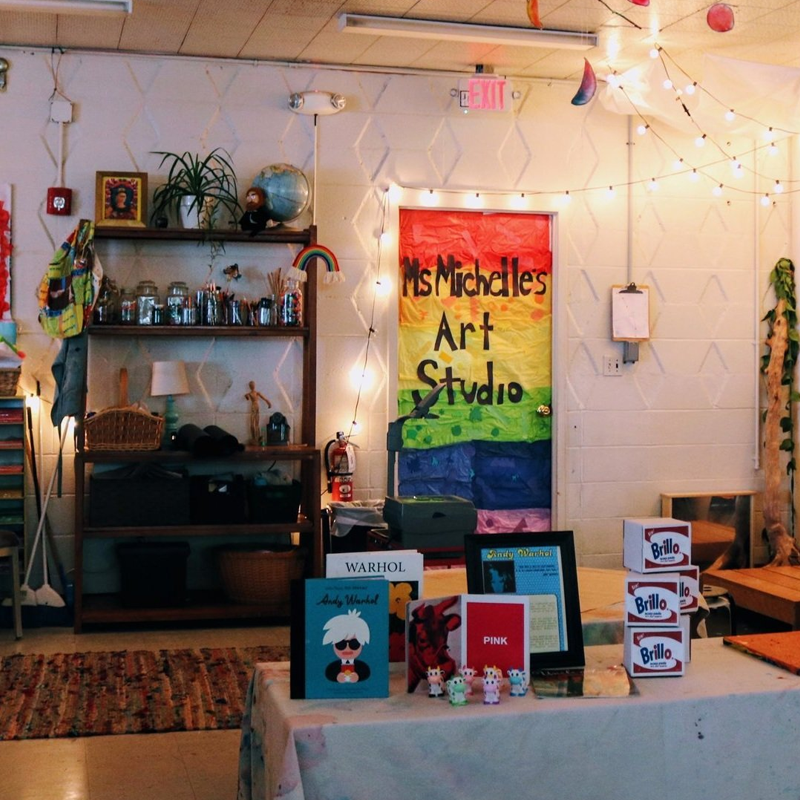
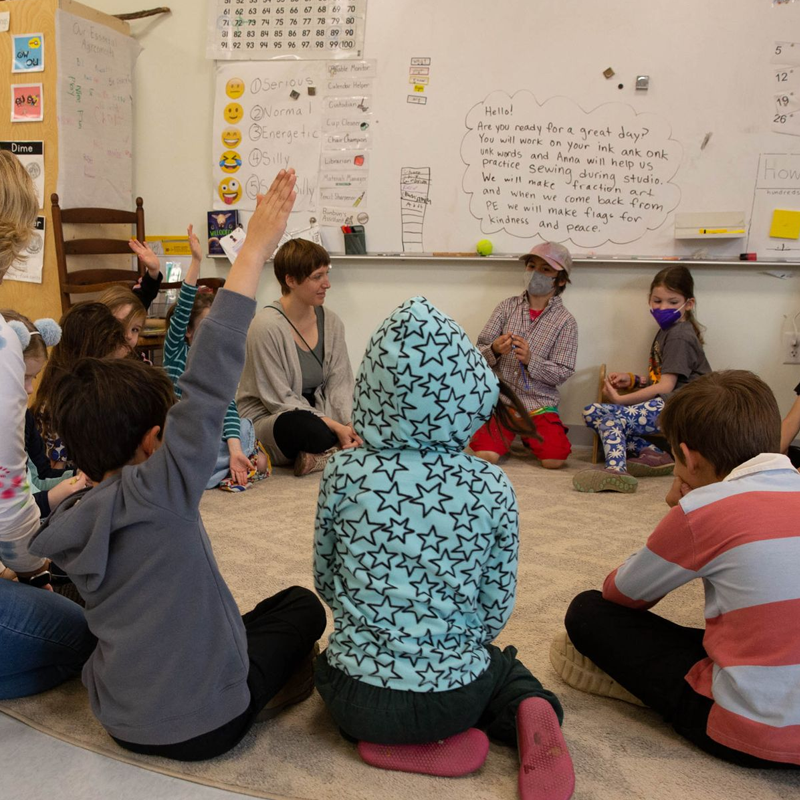
2. 피아자(중앙 회의장)
The Piazza serves as the social hub of the classroom. Inspired by the Italian town square, it is a shared space where children gather for conversation, group projects, morning meetings, and storytelling. It reflects the belief that learning is inherently social and that children benefit from sharing ideas within a community.
3. 학습 코너 및 미니 랩
Learning corners and mini-labs provide focused environments for inquiry into specific domains, such as science, construction, or storytelling. These smaller spaces encourage self-directed learning by allowing children to choose areas that align with their current interests. The design supports deep engagement, as children can explore materials and ideas without interruption. Children also build independence as they manage time and tools during exploration.
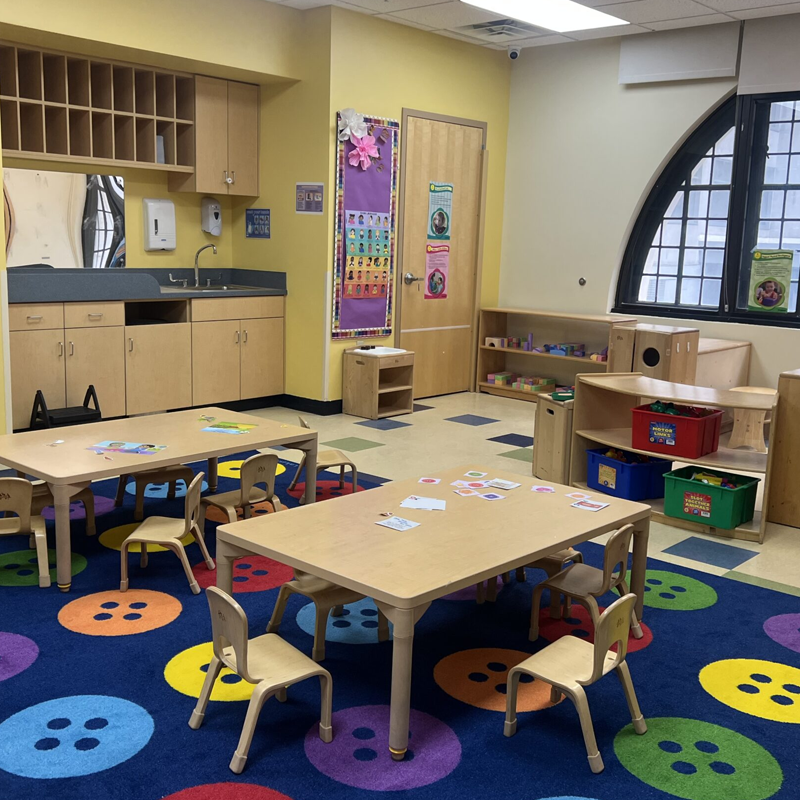
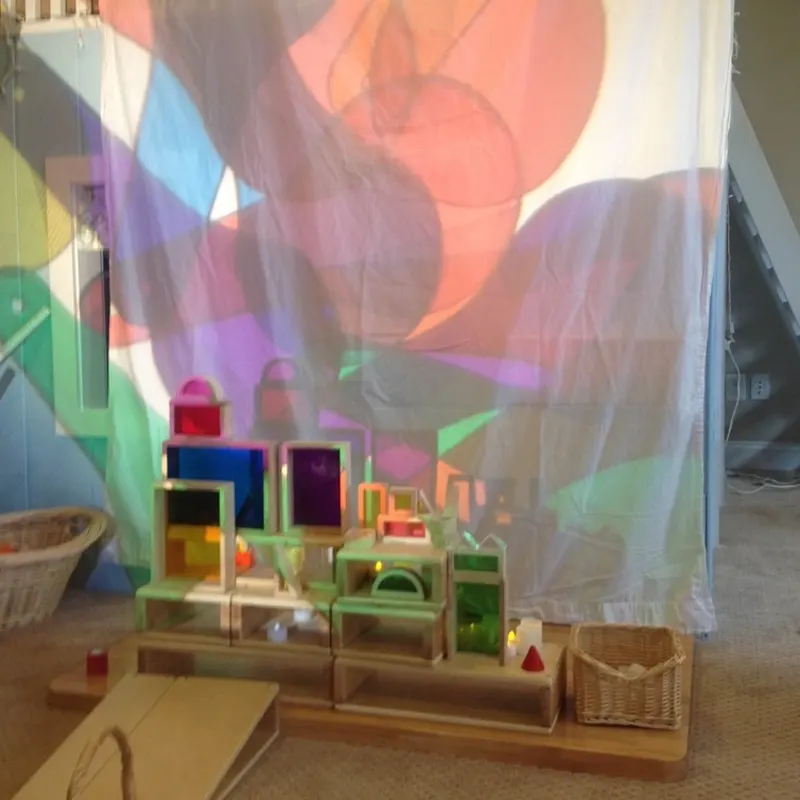
4. The Light and Shadow Center
Light is considered a powerful medium in Reggio-inspired learning. The light and shadow center gives children the chance to manipulate reflections, projections, and shadows, sparking curiosity about natural phenomena and abstract concepts. Through hands-on manipulation of light sources and materials, children engage in discovery and visual storytelling.
5. Quiet and Reflective Spaces
Quiet and reflective spaces respect each child’s rhythm by offering comfort and stillness within a busy classroom environment. These zones allow children to process their emotions, engage in individual reading or journaling, and build inner focus. By providing an intentional retreat, educators send the message that reflection is just as valuable as activity. Such spaces also support children in developing self-regulation and emotional awareness.
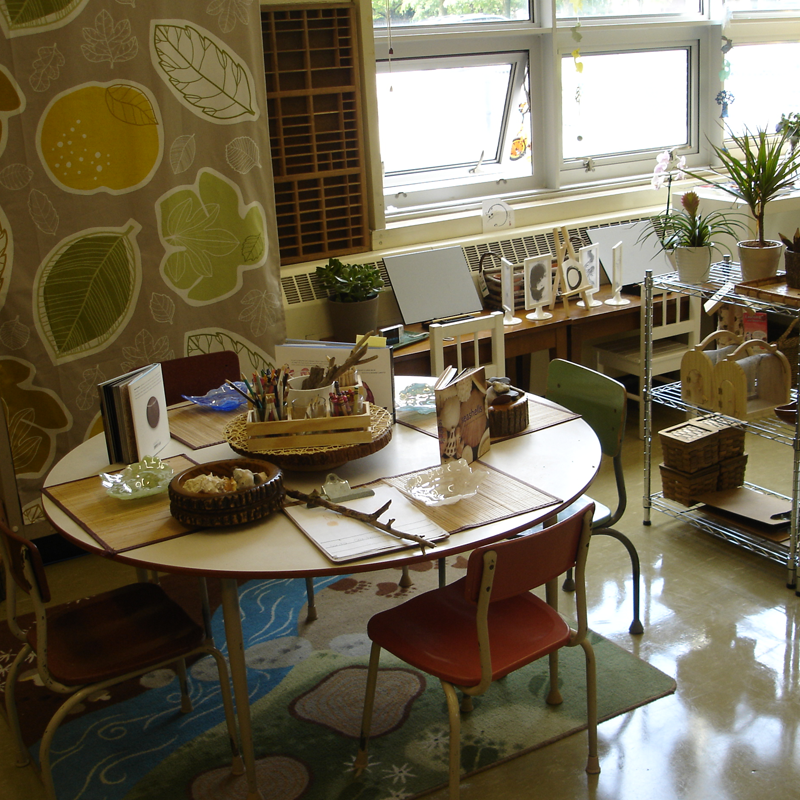
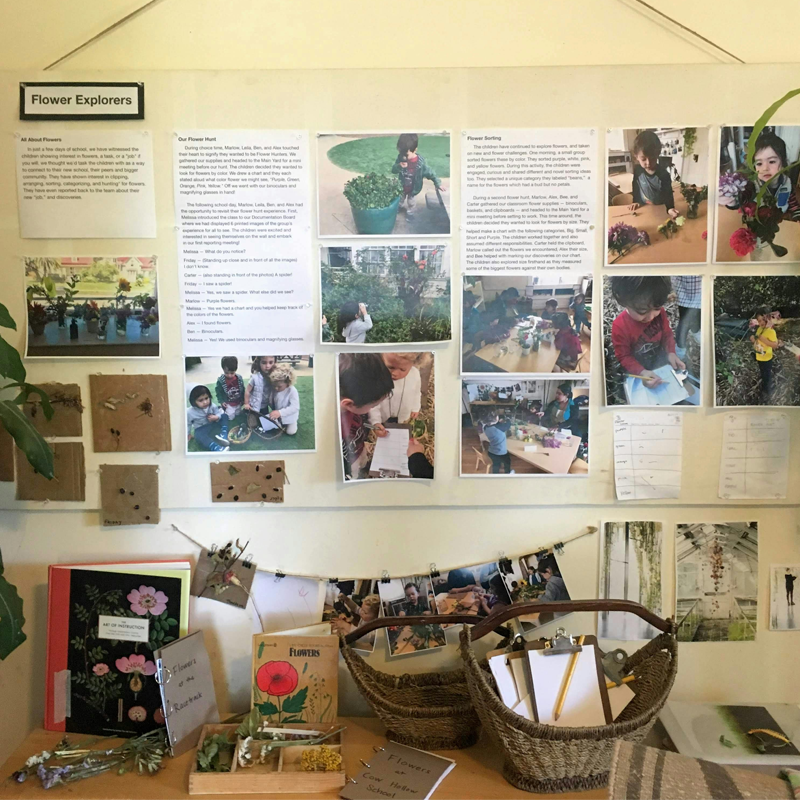
6. Display and Documentation Areas
Documentation is central to Reggio-inspired learning, and these areas serve as living records of children’s work. By displaying drawings and photos, teachers make the learning process visible to children, parents, and visitors. This practice not only validates children’s efforts but also encourages ongoing dialogue about their discoveries. Documentation areas evolve with projects, reinforcing that learning is dynamic, collaborative, and deeply connected to children’s experiences.
7. Natural and Outdoor Zones
Outdoor environments and natural zones are seen as extensions of the classroom, providing children with direct encounters with nature. Here, they engage with plants, weather, and natural materials, developing respect and curiosity for the living world. These spaces invite exploration of seasonal changes, life cycles, and environmental stewardship. By combining movement, sensory experiences, and observation, outdoor zones give children opportunities to learn holistically.
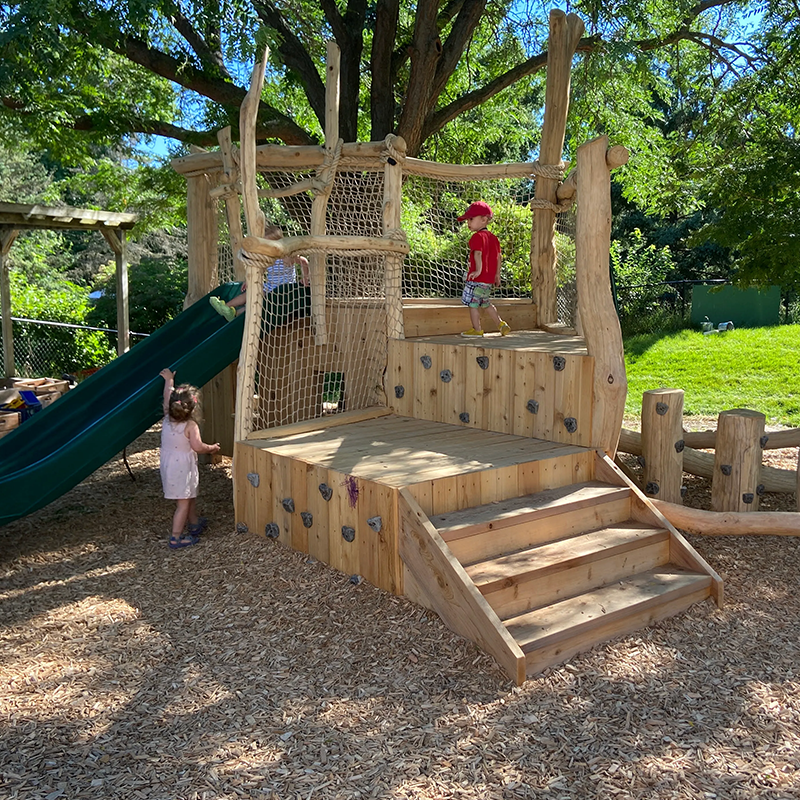
학습에 영감을 주는 공간을 디자인할 준비가 되셨나요? 교실의 필요에 맞춘 맞춤형 가구 솔루션을 위해 저희에게 문의하세요.
Teacher’s Role in the Reggio Emilia Approach
레지오 에밀리아 접근법에서 교사는 교실 앞에서 지식을 전달하는 전통적인 권위자가 아닙니다. 오히려 교사는 연구자, 협력자, 경청자, 그리고 선동가로 여겨집니다. 즉, 아이 위에 있는 것이 아니라 아이와 함께 배우는 존재입니다. 이처럼 새롭게 정의된 역할은 레지오 철학의 성공에 핵심적이며, 기존의 유아 교육과 차별화됩니다.
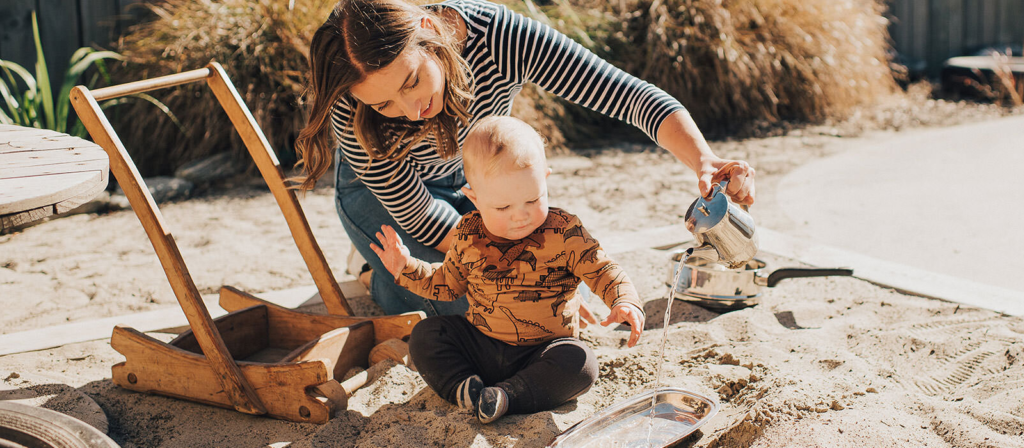
1. 관찰자와 청취자가 먼저
레지오 에밀리아 교사는 주의 깊은 관찰로 시작합니다. 지시하거나 바로잡기 위해 성급하게 행동하기보다는, 아이들이 어떻게 생각하는지, 무엇이 그들을 흥분시키는지, 어떤 질문을 던지고 어떤 이론을 세우기 시작하는지 면밀히 관찰합니다.
Through attentive listening, teachers capture the intellectual processes behind the play, identifying the patterns, hypotheses, and relationships children naturally explore. These observations then guide the planning of future activities and the design of the learning environment.
This approach demands a high level of professional sensitivity. Teachers are not imposing a lesson plan; they uncover one already within the children.
2. 공동 연구자 및 협력자
레지오 교실에서 교사는 아이들과 함께 학습에 참여합니다. 교사는 공동으로 탐구하고, 열린 질문을 던지고, 다양한 재료를 실험하고, 발견한 내용을 함께 성찰합니다. 이를 통해 교사는 단순한 안내자가 아닌 탐구의 동반자가 됩니다.
Rather than “delivering” knowledge, teachers encourage children to build their understanding. For example, if children wonder why rain makes puddles, the teacher might suggest they collect water on different surfaces, draw what they see, or build a water table. The teacher is not to give them the answer, but to extend their thinking.
This shared inquiry creates a culture of mutual respect. Children feel their voices matter because adults aren’t telling them what to think — they think with them.
3. 문서 작성자 및 커뮤니케이터
A unique and vital responsibility of the Reggio Emilia teacher is documentation. Teachers record children’s dialogue, photograph their work, and reflect on the learning process. This is not simply for assessment. It is a way to make learning visible, shareable, and open to reflection.
Documentation allows teachers to revisit ideas with children, track development over time, and communicate meaningfully with families and colleagues. These records become part of the learning environment. They are displayed on walls, included in portfolios, and used during parent-teacher conversations to deepen understanding and collaboration.
Through documentation, the teacher reinforces the value of each child’s thinking while engaging in continuous professional self-evaluation.
레지오 에밀리아 접근법의 교사는 결코 수동적인 존재가 아니지만, 그들의 힘은 통제가 아닌 주의력, 호기심, 그리고 존중에서 나옵니다. 그들은 따름으로써 인도하고, 경청함으로써 가르치고, 배우면서 이끌어갑니다.
힘든 역할이지만, 동시에 매우 보람 있는 역할이기도 합니다. 교사가 스스로를 지식의 공동 창조자로 자리매김할 때, 아이들은 학습에 대한 주인의식을 갖고, 목적과 경이로움을 가지고 세상을 탐구할 수 있는 자신감을 키울 수 있습니다.
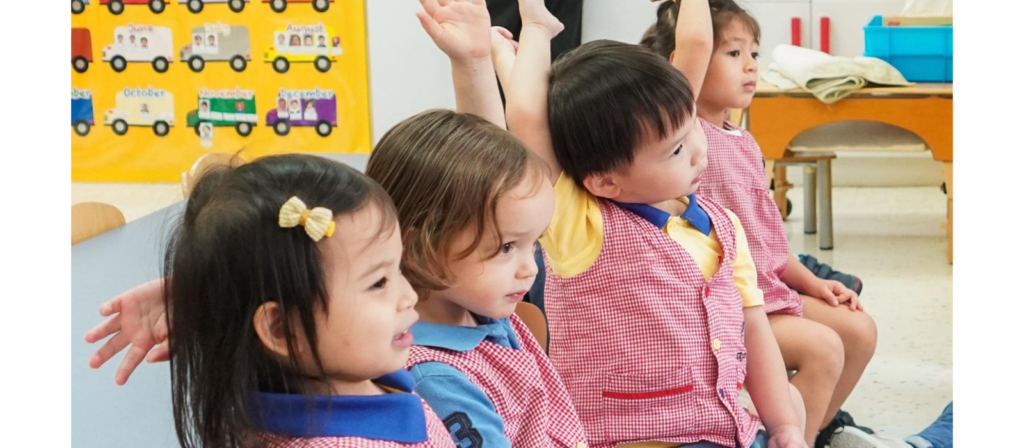
레지오 에밀리아 접근법의 평가 및 문서화
In the Reggio Emilia Approach, assessment is not a test at the end of a unit or a checklist of skills. Instead, it is a continuous, qualitative, and collaborative process known as documentation. This approach honors the complexity of children’s thinking by making their learning visible to themselves, teachers, and families.
1. 학습 도구로서의 문서화
Teachers in Reggio Emilia classrooms systematically observe children’s interactions, questions, creations, and conversations. They capture these moments through written notes, audio recordings, photographs, video, and children’s work samples.
But documentation is not simply collecting evidence; it’s interpreting and reflecting. Educators use these artifacts to analyze how children construct knowledge, what theories they develop, and how their ideas evolve. It also helps identify new opportunities to extend inquiry.
이 과정은 평가를 교육과정 개발을 위한 역동적인 도구로 전환하는데, 문서화는 미래 계획에 직접적인 영향을 미치기 때문입니다. 이는 미리 정해진 교육이 아닌, 즉각적으로 반응하는 교육 모델을 지원합니다.
2. 학습을 가시화하기
A key purpose of documentation is to make children’s thinking and learning visible, not only to teachers but also to children and families. Visual displays that include photos, transcripts of dialogue, and project boards are commonly found throughout Reggio-inspired environments.
When children see their words and work displayed on the walls, it affirms their ideas and supports metacognition. This ability to reflect on their own learning helps them revisit past thinking, make meaningful revisions, and form new connections that deepen understanding.
For parents, this visibility builds trust and deepens involvement. Rather than waiting for end-of-term reports, they are regularly invited into the learning journey through exhibitions, journals, and shared reflections.
3. 전통적인 평가 재고
레지오 에밀리아 접근법은 유아기에 표준화된 시험, 성적, 그리고 엄격한 기준을 의도적으로 거부합니다. 레지오 교육자들은 "아이가 몇 점을 받았나요?"라고 묻는 대신 다음과 같이 질문합니다.
- 아이는 무엇에 호기심을 가지고 있나요?
- 아이는 어떻게 세상을 이해하고 있나요?
- 그들의 조사를 통해 어떤 기술이 드러나는가?
- 그들의 선택을 통해 어떤 가치가 표현되는가?
This shift from evaluation to interpretation respects the complexity of learning. It values not what a child has memorized but how they think, question, collaborate, and create.
It also demands more from educators. Adequate documentation requires time, focus, and professional insight. However, the reward is a more authentic and holistic view of each child’s development.
In the Reggio Emilia Approach, assessment is woven into the fabric of daily life. It is not something done to children, but something done with them. It becomes a shared reflection on learning that fosters deeper insight, strengthens relationships, and supports a culture of continuous growth.
It is not about measuring learning. It is about seeing it, honoring it, and building upon it.
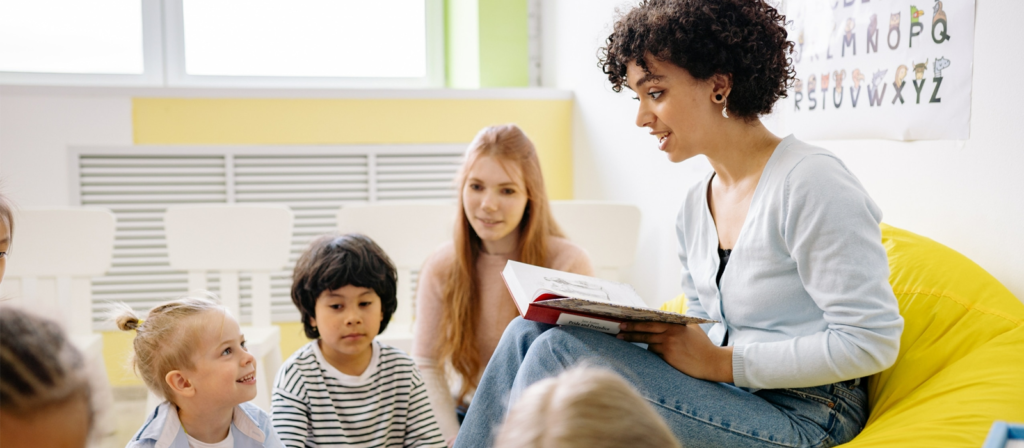
학습에 영감을 주는 공간을 디자인할 준비가 되셨나요? 교실의 필요에 맞춘 맞춤형 가구 솔루션을 위해 저희에게 문의하세요.
레지오 에밀리아 접근법에서의 부모 파트너십
One of the Reggio Emilia Approach’s most distinctive and potent features is its view of parents not as clients or passive observers but as active partners in their child’s learning journey. This deep commitment to family involvement is not a side note but a core pillar of the philosophy. The school, the teacher, and the parent form a triangle of trust, each playing a vital role in shaping the child’s development.
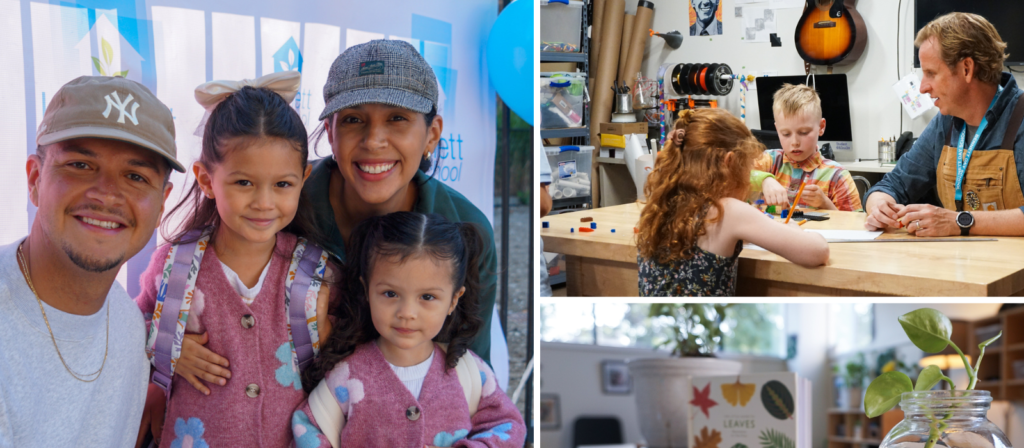
1. 공동 교육자로서의 부모
In Reggio-inspired schools, parents are seen as the first and most influential educators in a child’s life. Rather than being told what the school is doing, families are invited to participate in shaping the learning environment and curriculum.
여기에는 다음이 포함될 수 있습니다.
- 교사들과 정기적인 토론 및 계획 회의에 참석
- 교실 프로젝트를 풍부하게 하기 위해 집에서 자료나 이야기를 제공합니다.
- 어린이 작품 전시회 참여
- Helping co-document or interpret their child’s thinking
This collaborative approach builds mutual respect and allows educators to better understand the cultural, emotional, and intellectual context each child brings to the classroom.
2. 투명한 소통과 공유된 성찰
A hallmark of the Reggio Emilia Approach is its use of documentation to promote open and transparent communication with families. Teachers share learning journals, photo displays, transcribed conversations, and even video snippets not as proof of productivity, but as windows into the child’s mind.
학부모님께서는 이 자료를 참고하여 질문하고, 통찰력을 제시하고, 가정에서 관찰한 내용을 공유해 주시기 바랍니다. 이러한 쌍방향 대화는 학교와 가정의 가치관 사이에 일관성을 유지하여 자녀가 두 환경 모두에서 더욱 안정감과 지지를 받는다고 느끼도록 도와줍니다.
Regular parent-teacher meetings in Reggio settings are less about performance and more about shared meaning-making, understanding who the child is, what excites them, and how to support them as a team.
3. 협력을 통한 커뮤니티 구축
The Reggio Emilia philosophy extends beyond the individual classroom. It actively fosters community among families, encouraging collective ownership of the educational space. Parents may work together on projects, school-wide installations, or cultural celebrations.
Many Reggio schools even include parent spaces within the school, where families can meet, share coffee, or exchange ideas. This physical integration signals a more profound truth: families are not visitors, but respected learning community members.
The result is a culture in which children see that learning is not confined to school walls. They feel the support of a larger, interconnected web of adults who listen to them, learn from them, and grow with them.
In the Reggio Emilia Approach, partnering with parents is not just beneficial but essential. When families and educators collaborate authentically, the child stands at the center of a strong, supportive network. This foundation enhances learning and builds the kind of trust, empathy, and shared responsibility that defines a truly human approach to education.
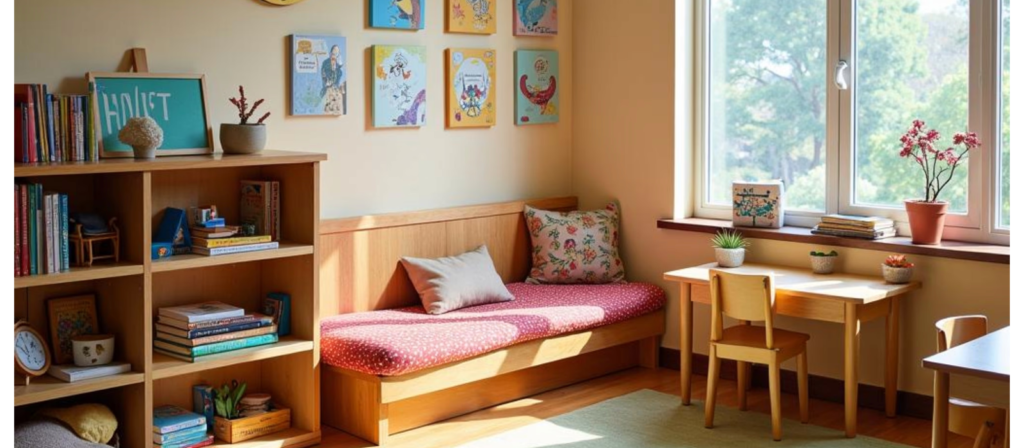
집에서 레지오 에밀리아 접근법 구현하기
레지오 에밀리아 접근법은 학교에만 국한되지 않습니다. 아이들이 집에서 배우고 성장하는 방식도 변화시킬 수 있습니다. 부모와 보호자에게 레지오 원칙을 집에서 적용한다는 것은 아이들이 자신의 의견이 존중받고, 존중받으며, 자유롭게 탐구할 수 있는 환경을 조성하는 것을 의미합니다. 값비싼 재료나 전용 스튜디오가 필요한 것은 아닙니다. 의도적인 선택, 창의력을 발휘할 수 있는 열린 공간, 그리고 아이를 유능하고 호기심 많은 학습자로 존중하는 마음가짐만 있으면 됩니다.
1. 유연하고 영감을 주는 환경 조성
물리적 공간을 다시 생각해 보는 것부터 시작하세요. 레지오에서 영감을 받은 집에서는 주변 환경이 제3의 교사처럼 여겨집니다. 이미 가지고 있는 것들을 활용하여 작고 유연한 학습 공간을 만들 수 있습니다. 그림을 그릴 수 있는 코너, 흩어진 물건과 자연물을 보관하는 선반, 조립이나 분류를 위한 테이블 등입니다.
재료들을 눈에 잘 보이고 쉽게 접근할 수 있도록 하세요. 아이들이 스스로 관심 있는 것을 선택할 수 있도록 바구니나 열린 선반을 사용하세요. 종이, 점토, 천, 단추, 나뭇가지, 판지, 심지어 재활용 용기까지 다양한 재료를 제공하세요. 이러한 재료들은 상상력과 문제 해결 능력을 키우는 열린 놀이를 유도합니다.
자연광, 식물, 거울, 그리고 심플한 미적 감각은 큰 변화를 가져올 수 있습니다. 아름답고 의도적인 공간은 아이에게 "여기는 너의 생각이 중요한 곳이야"라고 말해줍니다.
2. Follow the Child’s Interests
Reggio Emilia learning is child-led. At home, this means observing your child’s play and questions and extending those interests with gentle prompts and resources. If your child is fascinated by insects, for example, you could:
- 야외에서 벌레를 관찰하기 위해 잎과 돋보기를 모으세요
- 곤충 서식지를 함께 그려보세요
- 모델링 점토나 재활용 재료로 곤충을 만들어 보세요
- 곤충에 대한 책을 읽거나 이야기를 만들어 보세요
The key is to avoid rushing to teach or correct. Instead, be a co-learner, explore the topic with your child, ask questions, and support their discoveries. Let their curiosity guide the direction.
3. 다양한 표현 방식을 장려하세요
Support your child’s thinking through the hundred languages — drawing, music, movement, building, storytelling, and more. Avoid focusing on perfect results. Instead, ask reflective questions like:
- "이걸 만들 때 무슨 생각을 하셨나요?"
- "다음에는 무엇을 시도해 볼까요?"
- "당신의 그림에 대해 말해줄 수 있나요?"
These questions affirm their thought process and invite deeper reflection. You can also keep a portfolio of their work, not for judgment, but to revisit and reflect on their growth over time.
Even very young children benefit from this: when you document their marks, movements, or phrases, you convey that their ideas are worth remembering.
4. 존중과 협력의 문화 구축
Implementing the Reggio Emilia Approach at home isn’t just about materials and values. Respect your child’s voice, include them in decisions, and model active listening. You can also involve them in everyday tasks like cooking, gardening, or setting up play areas, treating these not as chores but as meaningful learning experiences.
아이들이 소속감을 느낄 때 자신감, 독립심, 그리고 더 강한 정체성을 얻게 됩니다. 가족 구성원들은 학습에 있어 단순한 권위자가 아닌 협력자가 됩니다.
Bringing the Reggio Emilia Approach home doesn’t mean replicating a preschool. It means creating a home where exploration is welcomed, creativity is nurtured, and children are trusted to lead their learning.
우리가 듣고, 관찰하고, 상호작용하는 방식을 조금만 바꿔도 아이들이 자신을 단순히 학생으로서가 아니라 유능한 사상가이자 창조자로 보는 방식에 지속적인 변화를 가져올 수 있습니다.
학습에 영감을 주는 공간을 디자인할 준비가 되셨나요? 교실의 필요에 맞춘 맞춤형 가구 솔루션을 위해 저희에게 문의하세요.
레지오 에밀리아 접근법 활동
레지오 에밀리아 접근법에서 활동은 미리 짜여진 수업이나 표준화된 과제가 아니라, 아이들의 자연스러운 호기심에서 비롯되는 의미 있는 탐구입니다. 이러한 활동은 개방적이고 프로젝트 중심적이며 실제 경험에 깊이 뿌리내리고 있습니다. 레지오 에밀리아 접근법의 목표는 단순히 어떤 주제를 "가르치는" 것이 아니라, 아이들이 생각하고, 질문하고, 창조하고, 협력하도록 유도하는 것입니다.
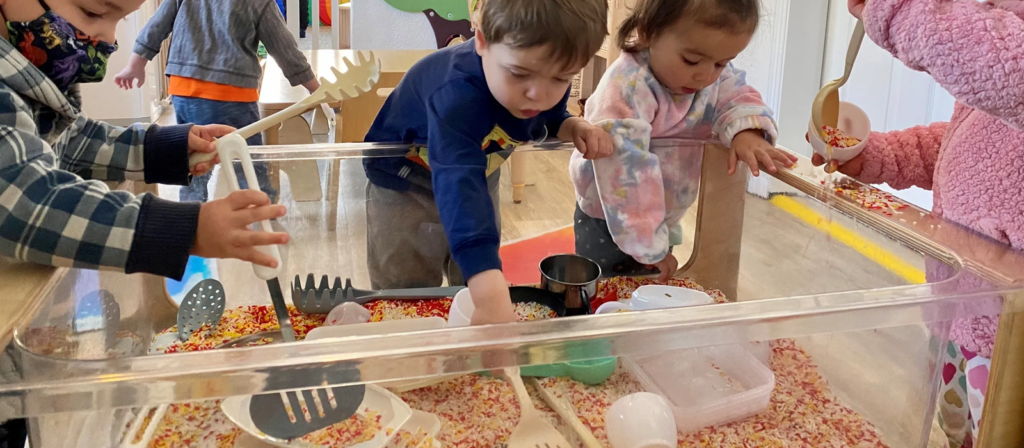
1. Nature Walk and Material Exploration
Children go on a nature walk and collect found objects such as leaves, stones, twigs, and flowers. These items are brought back to the classroom for closer examination and creative use. Children observe textures and patterns, make nature collages, or use the objects as tools in painting or printing. The experience connects them with the environment and fosters observation skills.
This activity enhances sensory awareness, builds scientific curiosity, and encourages symbolic representation. Children learn to see the world in new ways and express their interpretations through art and storytelling.
필요한 재료:
- Baskets or bags for collecting
- Magnifying glasses
- Paper and pencils
- Glue and scissors
- Cardboard or canvas for collages
2. Shadow and Light Investigation
Children explore how light behaves using flashlights, mirrors, translucent materials, and projectors. They experiment by casting shadows, reflecting light, and creating moving images. As they play with shapes and shadows, they begin to develop theories about light and movement.
This activity nurtures early scientific thinking, spatial awareness, and visual storytelling. It also invites children to express abstract ideas and emotions using nonverbal forms of communication.
필요한 재료:
- Flashlights
- 거울
- White sheets or walls
- Transparent colored paper or cellophane
- Cut-out figures or puppets
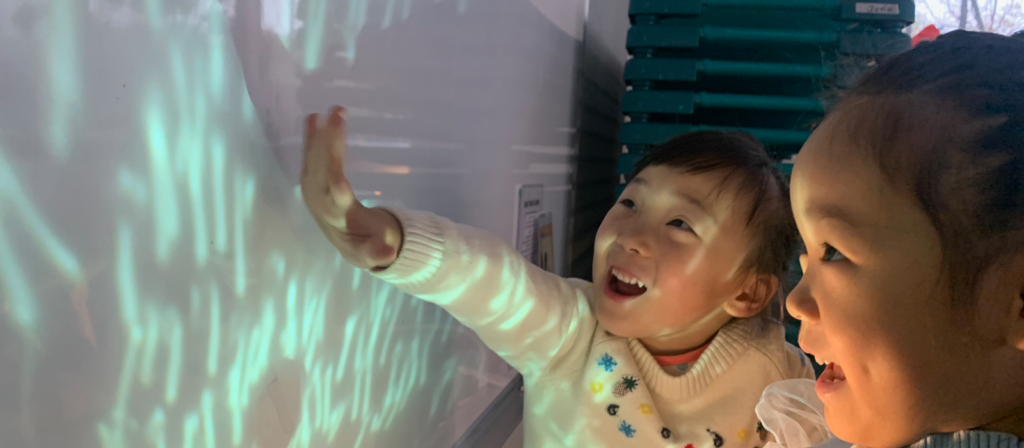
3. Collaborative Mural Painting
A large shared mural invites children to co-create a painting using brushes, hands, natural objects, or found materials. They may respond to a shared prompt or develop a spontaneous scene. Through group discussion and joint decision-making, children learn to negotiate space, ideas, and contributions.
This activity promotes cooperation, emotional expression, and creative confidence. It helps children learn how to listen to others, contribute their voice, and build a shared vision.
필요한 재료:
- Large roll of paper or canvas
- Paints and brushes
- Sponges, leaves, or textured objects
- Aprons or smocks
- Tape for mounting the mural on the wall or floor
4. Building with Recycled Materials
Children design and construct with boxes, tubes, caps, and scrap fabrics. They imagine homes, cities, or fantastical creatures, experimenting with form, balance, and connection. The process is guided by their own interests, and the outcomes often evolve over days.
This activity strengthens problem-solving, fine motor coordination, and design thinking. It also teaches sustainability and encourages children to see creative potential in everyday materials.
필요한 재료:
- Cardboard boxes and tubes
- Bottle caps and lids
- Glue, tape, and scissors
- Fabric scraps or yarn
- Paper fasteners or pipe cleaners
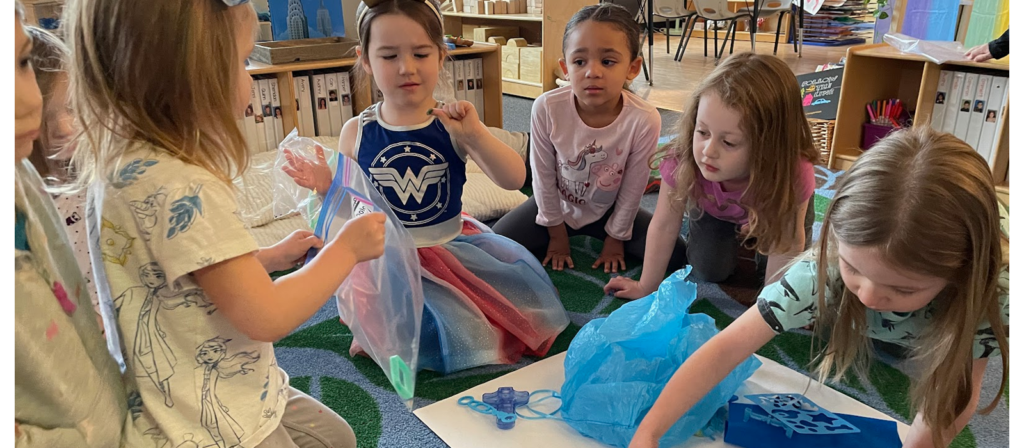
5. Story Mapping with Loose Parts
Children use small loose items to create characters and settings for original stories. They arrange materials on a mat or table and tell their story verbally, through drawing, or by recording it digitally. Each story can be revisited, altered, or expanded later.
This activity builds narrative thinking, vocabulary, and sequencing. It supports symbolic play and gives children alternative ways to express complex ideas and emotions.
필요한 재료:
- Wooden blocks or discs
- Stones and buttons
- Shells, string, and felt
- Story mats or trays
- Drawing paper or digital recorder
6. Emotional Expression through Clay
Children are invited to shape clay into symbols of their thoughts or feelings. They may sculpt “what happiness looks like” or build a clay memory of a favorite place. The tactile nature of the material allows for deep sensory and emotional engagement.
This activity supports emotional intelligence, self-awareness, and mindfulness. Working with clay also strengthens hand muscles and encourages sustained concentration.
필요한 재료:
- Natural clay or air-dry clay
- Clay tools or sticks
- Aprons or table covers
- Small containers of water
- Photographs or story prompts (optional)
레지오 에밀리아 접근법에 대한 도전과 비판
While the Reggio Emilia Approach is widely admired for its innovation and child-centered values, it is not without limitations. Understanding these challenges is crucial for educators, school founders, and policymakers to make informed decisions about implementation and long-term sustainability.
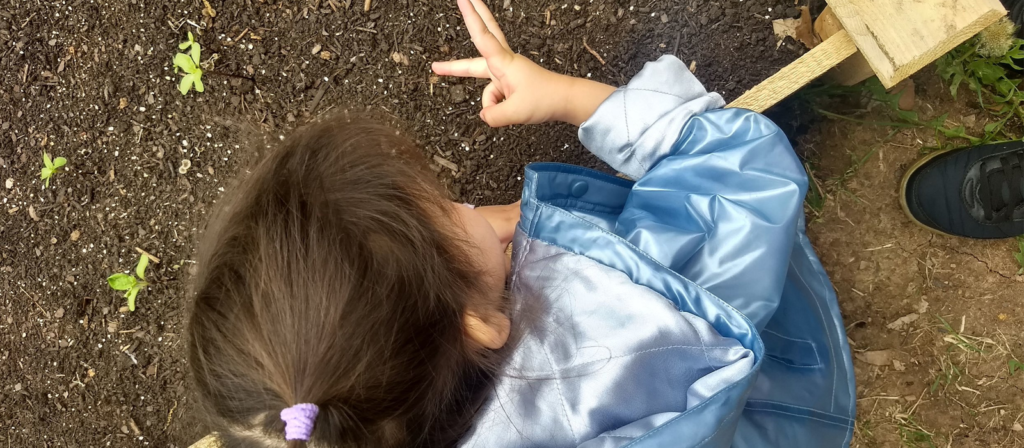
1. 표준화 부족
One of the most frequent criticisms of the Reggio Emilia Approach is its lack of a fixed curriculum or formal assessment system. Because learning is emergent and shaped by children’s interests, there are no preset benchmarks or standardized learning outcomes.
While beneficial in many ways, this flexibility can also make it difficult to measure progress objectively. This can be a significant barrier for school administrators or government bodies looking for consistent metrics. Teachers must rely on documentation and professional judgment rather than external testing, which can raise concerns about accountability and educational quality in some contexts.
Furthermore, without a universal framework, the quality of Reggio-inspired programs can vary widely depending on individual schools’ training, resources, and interpretation.
2. 교사에 대한 높은 요구
Implementing the Reggio Emilia Approach requires educators to take on multiple complex roles as teachers, researchers, documenters, designers, and collaborators. This demands high training, observation skills, and pedagogical reflection.
교사는 학습 환경에 끊임없이 적응하고, 아이들의 생각에 실시간으로 반응하며, 학습 과정을 상세히 기록해야 합니다. 이는 특히 교직원이 부족하거나 학생 대 교사 비율이 높은 학교에서는 매우 많은 시간과 정서적 부담을 안겨줄 수 있습니다.
Without proper support and ongoing professional development, even skilled teachers may struggle to fully realize the philosophy in daily practice.
3. 자원 집약적 환경
The Reggio Emilia classroom is more than a room with tables and toys. A curated environment stimulates inquiry, autonomy, and aesthetic appreciation. Schools must invest in quality materials, flexible furniture, and thoughtful design, often using natural and real-world elements like wood, metal, mirrors, and recycled items.
Recreating this environment can be financially and logistically challenging for new or budget-limited schools. Sourcing age-appropriate, open-ended materials and continuously updating them to reflect children’s evolving interests adds ongoing operational pressure.
Documentation tools (cameras, printing, display spaces) and teacher planning time must be factored into the budget and daily workflow.
4. 문화적, 구조적 불일치
레지오 에밀리아 접근법은 협력, 공공 자금, 지역 사회 참여가 강력한 이탈리아의 특정 문화적, 정치적 맥락에서 탄생했지만, 다른 국가로의 이전이 항상 원활하게 이루어지는 것은 아닙니다.
The approach may face resistance in systems where standardized testing, rigid curricula, or limited parent engagement are the norm. Some schools find it challenging to reconcile Reggio principles with external mandates, such as early literacy benchmarks or government inspections.
성공적인 적응에는 표면적인 수정뿐 아니라 체계적인 변화가 필요한 경우가 많습니다. 이러한 변화가 없다면, 철학이 희석되거나 오용될 위험이 있습니다.
The Reggio Emilia Approach is robust but also demanding. It requires deep commitment, flexible thinking, and long-term professional development and classroom infrastructure investment.
Understanding these challenges is not a reason to reject the approach; it’s a reason to prepare well. With the right mindset and resources, many of these obstacles can be transformed into opportunities for growth.
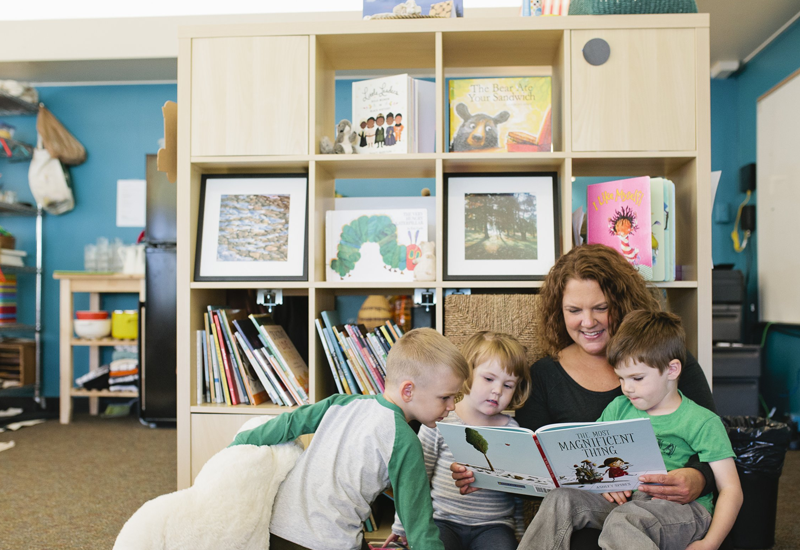
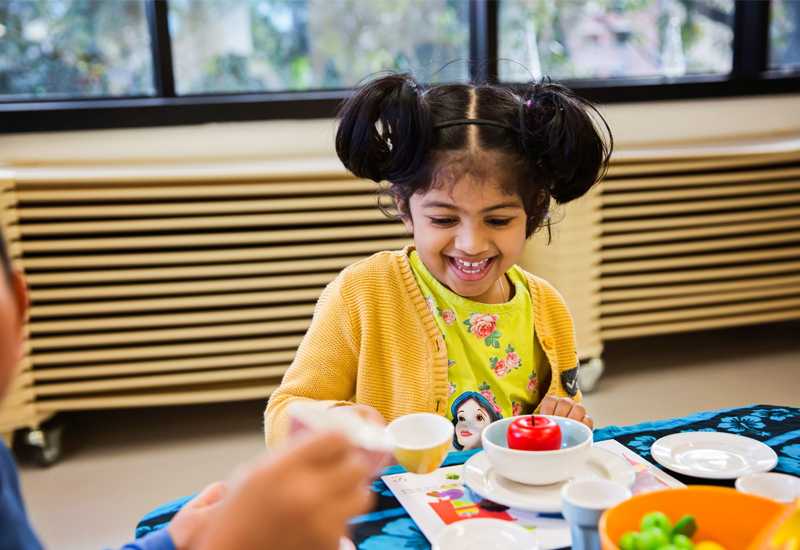
학습에 영감을 주는 공간을 디자인할 준비가 되셨나요? 교실의 필요에 맞춘 맞춤형 가구 솔루션을 위해 저희에게 문의하세요.
결론
The Reggio Emilia Approach reshapes early childhood education by placing children at the center of their learning. Through open-ended inquiry, expressive languages, and collaboration, it empowers young learners to construct meaning rather than passively absorb content. This framework doesn’t just teach, it helps children think, feel, and imagine in ways that last a lifetime.
Implementing this approach requires more than philosophy; it demands environments that mirror its values — flexible, beautiful, and built for exploration. That’s why thoughtfully designed furniture and adaptable classroom zones matter. Manufacturers like 웨스트 쇼어 가구, which specialize in early childhood furniture solutions, quietly support this vision by crafting environments that align with Reggio principles, giving ideas physical form without compromising safety, simplicity, or child-led accessibility.
The actual impact of the Reggio Emilia Approach is not in how well we recite its principles, but in how we translate them into living spaces, relationships, and daily practice. The transformation starts now for those ready to listen, observe, and build with intention.
FAQ: 레지오 에밀리아 접근법
질문 1: 레지오 에밀리아 프로그램은 다른 대부분의 미취학 아동 프로그램과 어떻게 다릅니까?
에이: 레지오 에밀리아 접근법은 기존 프로그램과 달리, 미리 정해진 주제가 아닌 아이들의 관심사에서 학습이 이루어지는, 창발적이고 아동 주도적인 교육과정을 강조합니다. 예를 들면 다음과 같습니다.
- 같지 않은 몬테소리순차적인 자료와 구조화된 작업을 사용하는 레지오는 고정된 결과가 없는 개방형 프로젝트를 장려합니다.
- 같지 않은 하이스코프"계획-실행-검토" 구조를 사용하고 일상 생활을 강조하는 레지오 교실은 더 유연하고 대응력이 뛰어납니다.
- 에 비해 테 와리키 from New Zealand, which also values cultural context and holistic learning, Reggio places a stronger emphasis on aesthetic environment and visual documentation as part of the learning process.
To explore how Reggio compares with other major models, visit our comprehensive Preschool Curriculum overview.
Q2: 레지오 에밀리아의 유명한 말은 무엇인가요?
에이: The most well-known quote from Reggio Emilia’s founder, Loris Malaguzzi, is:
"아이는 100개의 언어를 가지고 있어요."
이는 아이들이 예술, 움직임, 스토리텔링 등을 통해 자신을 표현하는 수많은 방법을 말합니다.
Q3: 레지오 에밀리아는 증거 기반인가요?
에이: Yes, while not a standardized model, the Reggio Emilia Approach is supported by decades of global practice, child development theory, and educational research emphasizing creativity, autonomy, and social learning.
Q4: 레지오 에밀리아 학교는 비용이 많이 드나요?
에이: 레지오 에밀리아 학교는 교사 대 아동 비율이 낮고, 고품질 교재와 세심하게 설계된 환경으로 인해 기존 유치원보다 비용이 더 많이 들 수 있습니다. 하지만 비용은 지역과 기관에 따라 다릅니다.
Q5: 레지오 에밀리아 유치원의 일반적인 하루는 어떻게 되나요?
에이: A typical day in a Reggio Emilia-inspired preschool is guided by children’s interests rather than a rigid schedule. The day often begins with a morning gathering in the “piazza” (central space), followed by time for project work, where children explore topics using materials like clay, paint, blocks, or found objects.
Teachers observe and document while children collaborate in small groups, often moving between zones like the atelier (art studio), reading corners, or outdoor gardens. There are opportunities for snack time, free play, and reflection, but transitions are gentle and responsive to the children’s flow of engagement.
Every activity is seen as a chance to express, discover, and co-construct knowledge — no worksheets, rigid lesson plans, just real learning in action.

